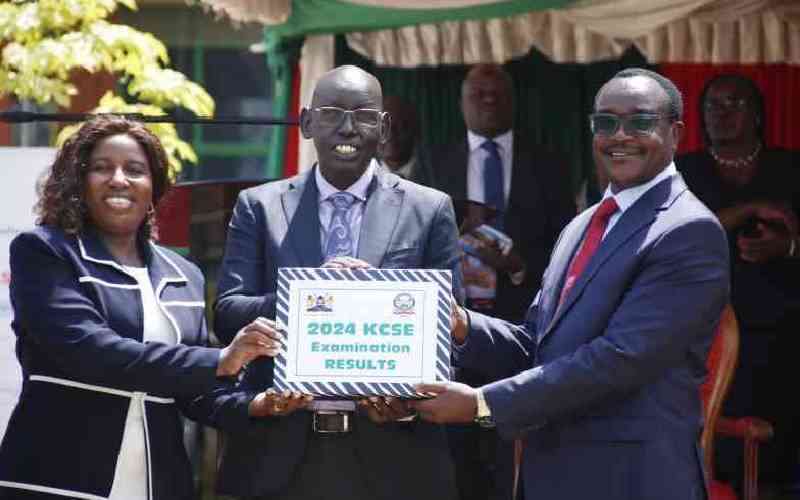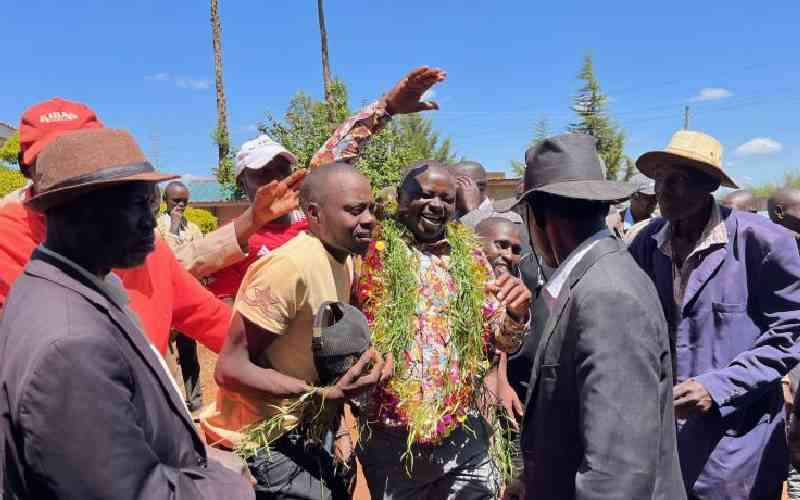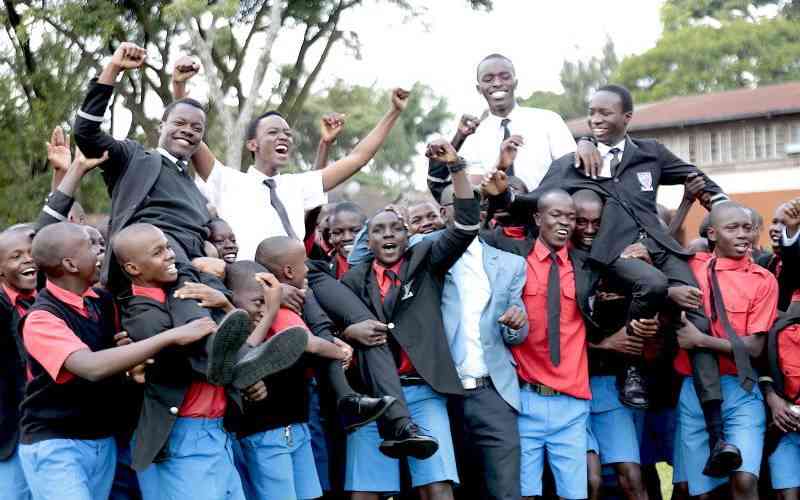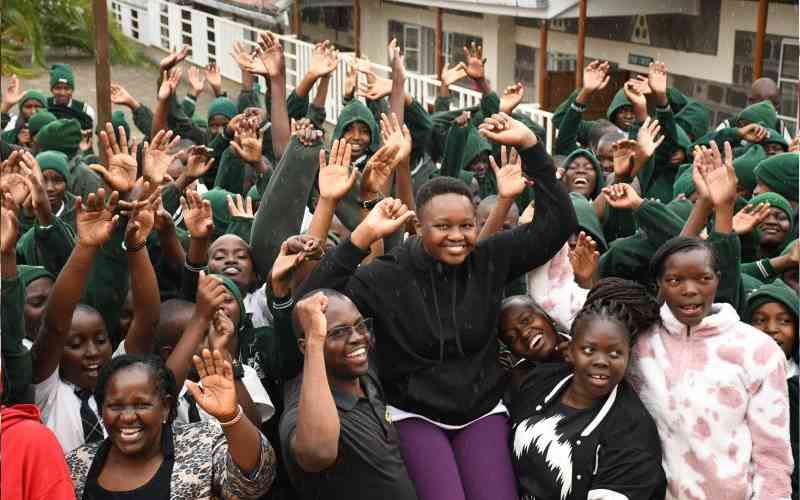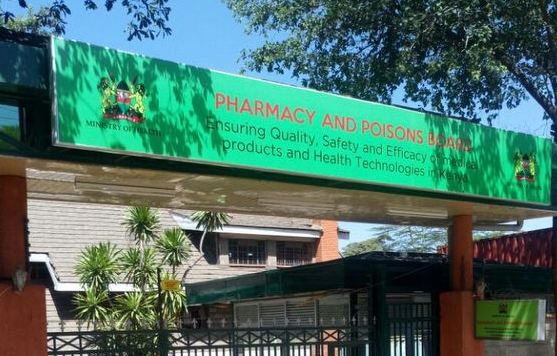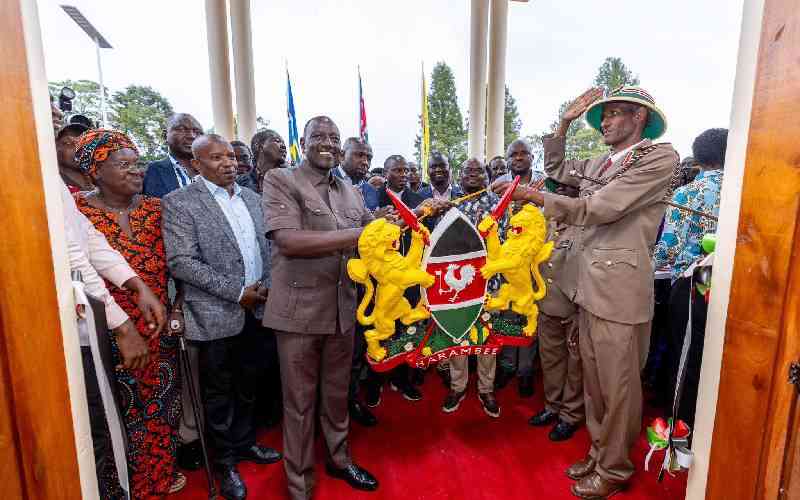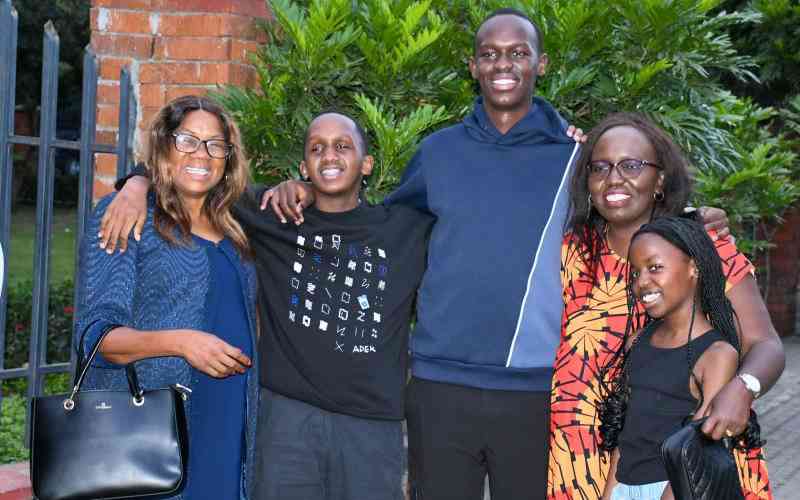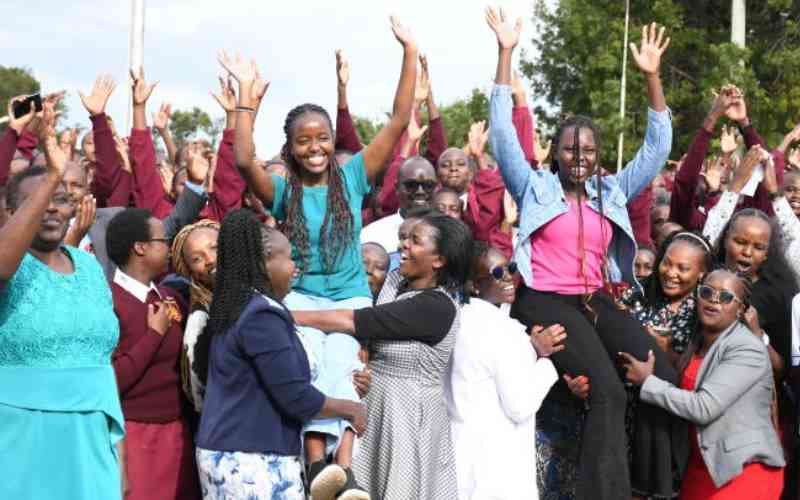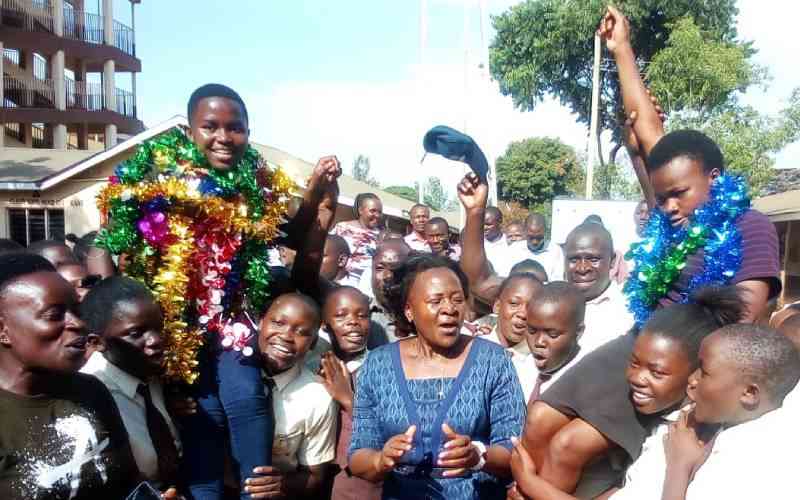
Whenever Terryann Shungur looks out into the plain countryside from her manyatta – a Maasai traditional hut – she sees two light brown Sahiwal calves running, jumping, and playing together as their big, floppy ears express their colourful emotions in the cool, and sometimes gusty Narok air.
For Terryann, the healthy calves give her a snapshot of her future.
The herbivores are a testament to the resilience of smallholder families like Terryann’s, who continue to strive for a better future despite the challenges they battle each passing day.
After giving birth to her son at 15 years old, Terryann was forced to drop out of school to focus on motherhood. During her pregnancy, she longed to resume her education but was unsure how she could afford it, with tuition fees standing at around Sh135,000 a year.
Her mother decided it was in the family’s best interest to sell two of their cows at Sh81,000 and use the funds for Terryann’s education. Despite being a young mother, Terryann, a student at Masaantare Mixed Day and Secondary School in Narok County, got a second chance at education. It was a transformative opportunity she enthusiastically seized. In most nomadic communities in Kenya, early pregnancy is a sure end to girls' education, due to the conservative nature of the cultures.
“I want to go to school so that I can go to university, and then after that, I can become a doctor,” Terryann vows.
“When I’m a doctor, I’ll work, and I will get a salary which I will use to improve myself and support my family,” she adds.
For that to happen, Terryann must keep her calves alive, which is a daunting task with a silent but deadly disease pillaging livestock across the countryside.
- Day out with the trash trackers of Mukuru slums
- Scientist transforming livestock health through genetic breakthroughs
- We need to talk to our children about climate change
- Climate justice and conservation are undeniably interconnected
Keep Reading
East Coast Fever (ECF), a cattle disease informally known as ‘cattle malaria,’ is extensively sweeping through livestock-keeping communities, leaving utter devastation to livelihoods.
According to Dr Mulei Muema - the Feed The Future Innovation Lab for Animal Health Program Manager - ECF is a tick-transmitted disease caused by the protozoan parasite Theileria parva.
He adds that the disease kills cattle within three weeks of infection through a fluid build-up in their lungs, otherwise called pulmonary oedema. This drowns the animals. The disease kills one cow every 30 seconds, and over 50 million cattle in central, eastern, and southern Africa are at risk of it.
Because the deadly cattle disease indirectly affects the health and nutrition of families, specifically mothers and their children, global researchers are tackling the disease and its side effects on farmers’ livelihoods.
The Feed the Future Innovation Lab for Animal Health (AHIL) programme is being implemented in 600 households in Narok County in Kenya. It seeks to improve human nutrition, economic welfare, and resilience by removing constraints to cattle health and production in Kenya and the East African region.
Washington State University leads the AHIL consortium with Kenya-based partners, including the University of Nairobi, the International Livestock Research Institute, and scientists from the Kenya Medical Research Institute and Kenya Agricultural and Livestock Research Organization.
The five-year programme combines laboratory and field intervention studies to improve the uptake of animal health interventions; and measure their impact on household well-being and the nutritional status of women and children.
Dr Muema says without this programme at such a vulnerable time, Terryann is unsure how she would have kept her calves healthy, ultimately leaving her with no money to continue with her education.
“ECF poses a significant threat to livestock in Kenya. It affects cattle in eastern, central, and southern Africa and is a major impediment to the establishment and growth of cattle in the region. Economic losses due to ECF are estimated to be up to USD300 million annually,” said Dr Muema.
AHIL Director, Prof Thumbi Mwangi, says while this East Coast Fever does not affect humans, the loss of cattle is affecting the livelihoods of smallholder farmers and pastoralists in rural sub-Saharan Africa, as ECF kills up to 90 per cent of untreated calves.
Prof Mwangi wears both academic and research hats. He is also a Washington State University associate professor for the WSU Paul G. Allen School for Global Health and a Chancellor’s Fellow in Global Health at the University of Edinburgh. He is also a senior research fellow at the University of Nairobi, and a co-director at the Centre for Epidemiological Modelling and Analysis (CEMA), at the University of Nairobi.
“Even if the diseases are not going to be passed on to people, they affect production…They affect the amount of milk, amount of meat, amount of growth the animals experience, then those eventually have an impact on health and nutrition of humans,” Prof Mwangi says.
Dr Muema notes that in the program’s first year, WSU researchers conducted baseline research to understand the community they would be involved with. They collected data on the nutrition of women and children, understood current practices of ECF control, and even educated farmers on how to notice the signs and symptoms of ECF so that they could diagnose and treat their cattle.
The epidemiologist also adds that the team is also improving the current ECF vaccine efficacy and making a field-level diagnostic kit for ECF.
Prof Mwangi says the information and data collected from this five-year programme will benefit the families directly involved, and, in the long run, create policy change that will dramatically improve farmers’ lives for years.
“Removing the constraint or the biggest disease, which is East Coast Fever, has ripple effects on a household’s economics and consumption of animal-source foods, and that will significantly reduce acute malnutrition,” Prof Mwangi elaborates.
Napolos Shungur, Terryann’s mother, beams as she describes how the programme benefits her family. She says it guarantees her an extra income to handle household needs, including saving for her daughter’s school fees.
“For me, this cow is my livelihood. When a cow dies, it means I can’t sell it, and I can’t get money to take the children to school,” says Napolos.
The mother is hopeful that the partnership will be productive in securing her family’s future, while admitting that she has lost many cows to ECF, leaving her with considerable loss and hardship for her family.
Feed the Future Innovation Lab for Animal Health has reminded Terryann that her future is linked to improved livestock production and health. Because she is one of the families participating in the programme, her dreams are not too far out of reach. The program is a beacon of hope for smallholder farmers like Terryann, offering a path to a brighter future.
“I will stay in school as long as we have healthy cattle. This gives me hope to become a doctor,” Terryann concludes evocatively.
- Josie Goodrich wrote this story in Narok County, Kenya, as part of a competitive, donor-funded international reporting programme at the Edward R Murrow College of Communication at Washington State University
 The Standard Group Plc is a multi-media organization with investments in media platforms spanning newspaper print
operations, television, radio broadcasting, digital and online services. The Standard Group is recognized as a
leading multi-media house in Kenya with a key influence in matters of national and international interest.
The Standard Group Plc is a multi-media organization with investments in media platforms spanning newspaper print
operations, television, radio broadcasting, digital and online services. The Standard Group is recognized as a
leading multi-media house in Kenya with a key influence in matters of national and international interest.


